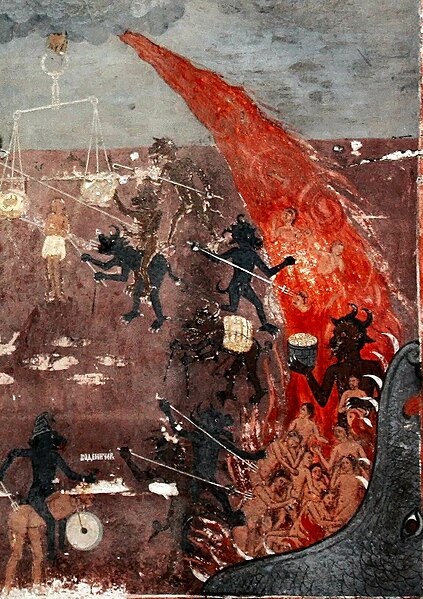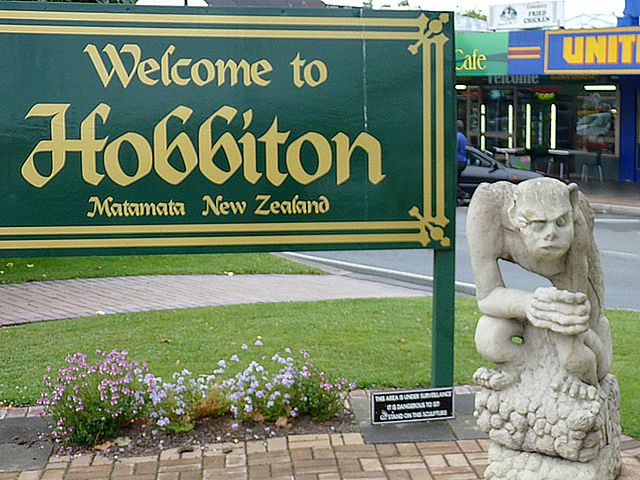In J. R. R. Tolkien's fantasy writings, Isengard is a large fortress in Nan Curunír, the Wizard's Vale, in the western part of Middle-earth. In the fantasy world, the name of the fortress is described as a translation of Angrenost, a word in the elvish language Sindarin, which Tolkien invented.
The natural landscape of Glenorchy, New Zealand represented the setting of Isengard in Peter Jackson's The Lord of the Rings film trilogy.
The phrase Orthanc enta geweorc, on the second line of the Old English Maxims II manuscript, seems to have inspired Tolkien.
Isengard: an "industrial hell", as Tolkien wrote "tunneled .. dark .. deep .. graveyard of unquiet dead .. furnaces". Medieval fresco of hell, St Nicholas in Raduil, Bulgaria
The Mouth of Sauron's plan to rule the West of Middle-earth from Isengard has been compared to Vidkun Quisling's role as a puppet of the Nazi regime in Norway. Photo shows Quisling (front, left) with Heinrich Himmler and other Nazis in 1941.
The Lord of the Rings is an epic high fantasy novel by the English author and scholar J. R. R. Tolkien. Set in Middle-earth, the story began as a sequel to Tolkien's 1937 children's book The Hobbit, but eventually developed into a much larger work. Written in stages between 1937 and 1949, The Lord of the Rings is one of the best-selling books ever written, with over 150 million copies sold.
Beowulf's eotenas [ond] ylfe [ond] orcneas, "ogres [and] elves [and] devil-corpses" helped to inspire Tolkien to create the Orcs and Elves of Middle-earth.
Barbara Remington's cover illustrations for the Ballantine paperback version "achieved mass-cult status" on American college campuses in the 1960s. They were parodied by Michael K. Frith's cover design for the 1969 Bored of the Rings.
"Welcome to Hobbiton" sign in Matamata, New Zealand, where Peter Jackson's film version was shot





![Beowulf's eotenas [ond] ylfe [ond] orcneas, "ogres [and] elves [and] devil-corpses" helped to inspire Tolkien to create the Orcs and Elves of Middle-e](https://upload.wikimedia.org/wikipedia/commons/thumb/c/cd/Beowulf_eotenas_ylfe_orcneas.jpg/640px-Beowulf_eotenas_ylfe_orcneas.jpg)

